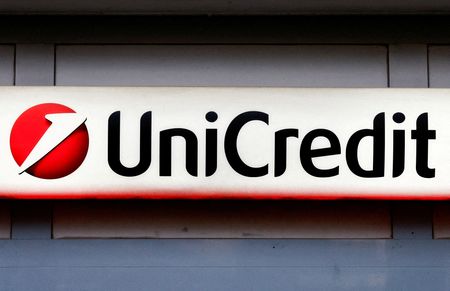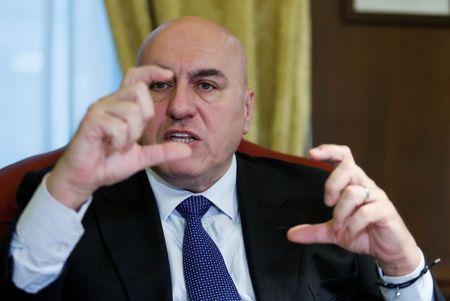By Stefano Bernabei and Gavin Jones
ROME (Reuters) -A previously unused English word crept into the Italian language during the euro zone debt crisis of 2011 as the country’s borrowing costs soared to unsustainable levels.
Ever since then “lo spread”, or the gap between the yield on Italian benchmark bonds and their German equivalents, has been brandished by politicians and the media alike as a symbol of national pride or shame, much like a sporting victory or defeat.
After the BTP-Bund gap took a rare dip below one percentage point, or 100 basis points (bps), Prime Minister Giorgia Meloni told parliament last week “this means Italy’s government bonds are considered safer than German ones.”
Her economy minister, aware the narrower spread in fact meant merely that Italian bonds were considered comparatively less unsafe than before, smiled and shook his head beside her.
Fourteen years ago the attention on the spread was justified. Germany’s economy was the European powerhouse and the surge in Italian yields meant Rome had to pay huge sums to service its debt and risked losing market access altogether.
Times have changed, however, and many economists say that with German benchmark bond yields rising due to a planned spending splurge on defence and infrastructure, Italians’ fixation with the BTP-Bund spread now makes far less sense.
“What matters for us is the level of interest rates, not the spread with Germany,” said economist Tito Boeri, a former head of Italy’s state pensions agency. “If German yields rise that doesn’t help Italy’s public accounts.”
INTEREST BURDEN
Rome spends some 90 billion euros ($101 billion) per year, or 4% of gross domestic product to service its 3 trillion euro public debt. With the yield on 10-year BTPs still above 3.5%, that implies a heavy burden on state coffers regardless of the narrow spread with Germany.
At around 135% of GDP, Italy’s debt is proportionally the second-largest in the euro zone after Greece’s, and it is forecast by the government to rise through 2026.
Analysts say Meloni’s unambitious but relatively prudent economic policies have reassured markets, but the recent narrowing of the spread is mainly down to developments in Germany and the United States.
Economist Lorenzo Bini Smaghi, a former European Central Bank board member, said investors’ waning appetite for U.S. Treasuries had benefited European bonds and particularly high-yielding paper such as Italy’s.
“If I consider Europe as a safer bet, partly because I expect the dollar to fall, I’m going to invest in European bonds, especially those that offer higher returns,” he said.
Italian bond yields are still the highest of any euro zone country, reflecting the risk-premium demanded by investors, and Boeri warned that market volatility linked to U.S. economic policy meant Rome had no reason for complacency.
Italy’s 10-year yield of around 3.6% compares with 3.2% on equivalent Spanish bonds and 3.4% on Greek ones.
“We need to be very, very careful because what is happening on international government bond markets shows us the slightest mistake (in economic policy) can be costly,” he said.
FLIGHT TO SAFETY
Italy could come unstuck even without a mistake. Spread fluctuations very often reflect “risk-on” or “risk-off” market sentiment driven by international events, not Italian ones.
The BTP-Bund gap widened briefly but sharply, for example, after U.S. President Donald Trump announced swingeing trade tariffs on April 2, only to suspend many of them a week later.
“The spread widens when we see a flight to safety because Italy is not considered ‘safety’,” said Roberto Perotti, economics professor at Milan’s Bocconi university.
A glance at the past shows the BTP-Bund spread has dipped below 100 bps under several Italian governments, sometimes surging shortly afterwards due to factors outside their control.
For much of 2009 the spread hovered between 80 and 100 bps under Prime Minister Silvio Berlusconi, before widening out to a peak of more than 570 bps in 2011 during the euro zone debt crisis, despite Rome following a broadly stable fiscal policy.
In 2021, under former ECB President Mario Draghi, it again narrowed to less than 100 bps only to widen to 250 the following year amid surging global inflation after the COVID-19 pandemic.
Perotti said it was understandable that Meloni should point to the narrow spread as a political success. But with Germany no longer seen as a pillar of fiscal restraint and stability, its value as an indicator had diminished.
“At the moment it doesn’t have much meaning,” he said.
($1 = 0.8890 euros)
(Reporting by Stefano Bernabei and Gavin Jones; Editing by Hugh Lawson)









